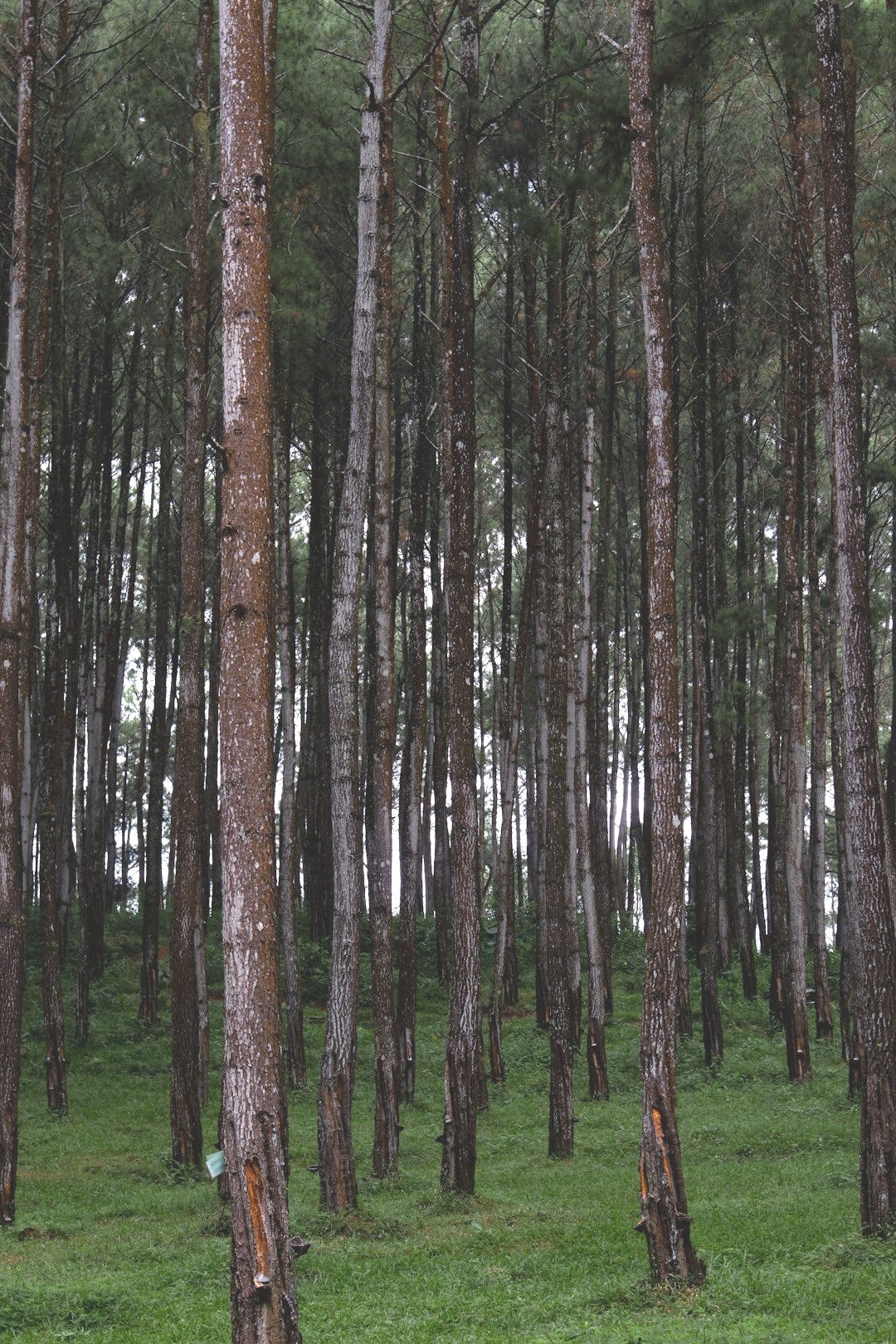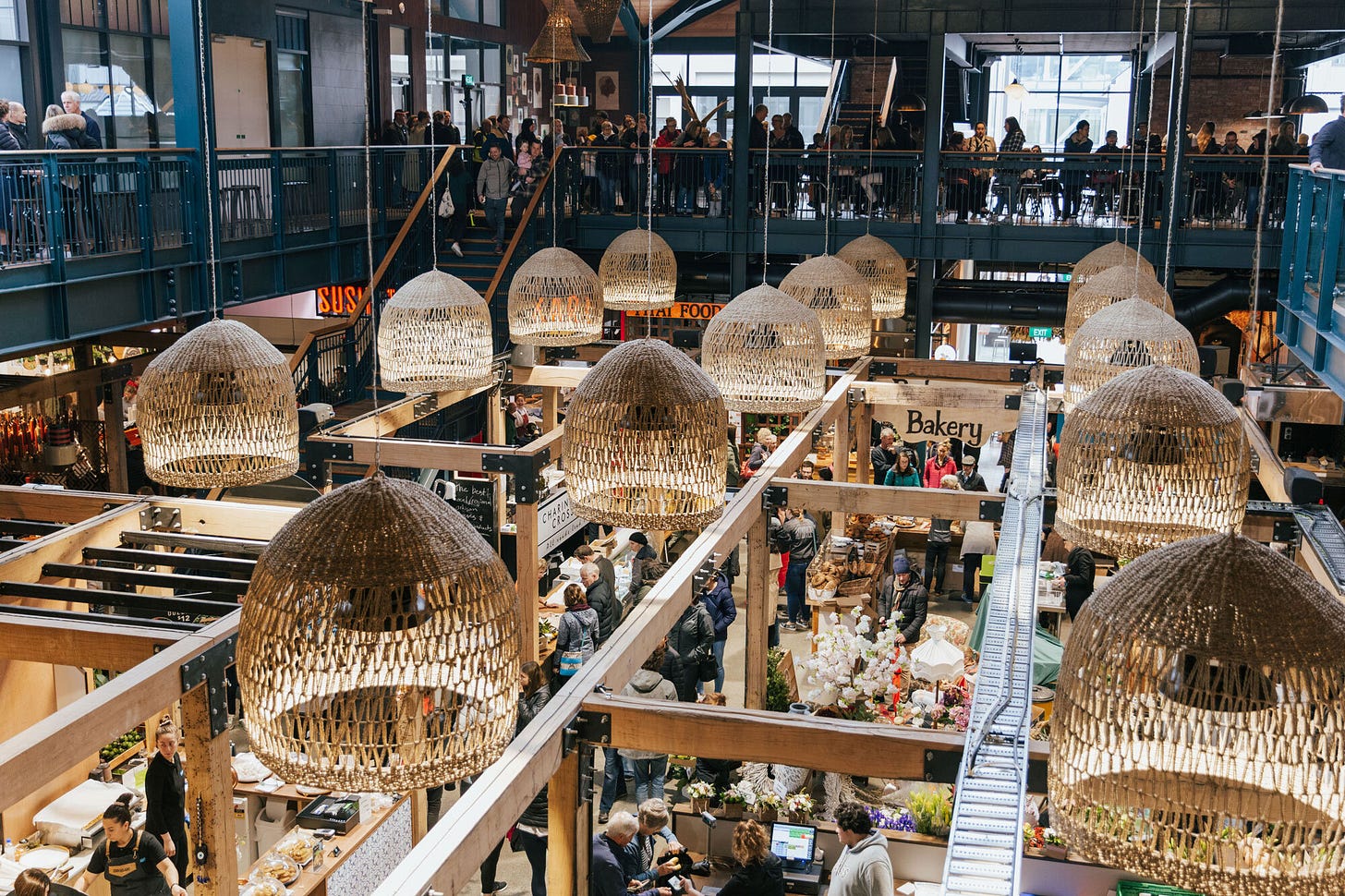Diversity is the spice of life
Why it’s so important to prioritise diversity in all its forms for resilient ecosystems
Take a look at the following two images of forests.
Which one do you think provides more functions like cleaning the air we breathe, regenerating soil, and purifying water? Which one supports a diverse array of below-ground microbes and above-ground fauna? Which one holds unknown secrets that may provide future pandemic ending medicines? Which one is more resilient to climate shocks?
And which one speaks nourishment to you?


If you picked the first one, I’m sure you’re with everyone else. It seems pretty obvious really, doesn’t it? Yet, we tend to prioritise monocultures in forestry because it’s cheaper, easier, and faster.
This is problematic. Diversity really is the spice of life. We’re taught this in Ecology 101. As a general rule of thumb, the more species a system supports, the more healthy it is. So continuing to prioritise single species forests for carbon benefits comes at a major cost ecologically.
This is a clear win-loss situation, where there are immediate climate benefits that come at a cost to biodiversity, and in fact the climate benefits are lost entirely if the forest proceeds to be cut down twenty to thirty years later. Instead, we should be looking for win-wins in this space as biodiversity loss and climate change should be tackled together.
Here, I’m going to lay out a few important ways in which diversity is beneficial for biodiversity.
Sit tight, buckle up, and be ready for an overwhelming amount of ecological jargon!
More diversity means more stability
Look at any sensible investor. How do they invest their money? Do they go all-in on one stock? Or do they spread their risks?

Of course it’s the latter.
Spreading their money across multiple investments reduces their risk. A diversified portfolio is less vulnerable to shocks because not all investments will react in the same way to market fluctuations. So a diversified portfolio is more resilient.
The same thing applies to ecosystems. We call this the portfolio effect.
Just like investing in a diverse portfolio of stocks and shares buffers investors from unexpected shocks, the more species a system supports, the more stable it will be in response to ups and downs in the environment. This is because each of these species responds in unique ways to environmental changes or disturbances, which increases the likelihood that species can compensate for one another. We call this response diversity. So when you average them all out, the aggregate measure of the system (e.g. overall abundance or biomass of all life in the system) is relatively stable.
Response diversity enhances ecosystem resilience by ensuring that critical functions, like pollination or nutrient cycling, are maintained even if some species are negatively impacted. It also allows ecosystems to adapt and recover more effectively from stressors such as climate change, habitat loss, or extreme weather events.
So, single species forests will also have a lower ability to adapt and respond to future threats.
More diversity means more functionality
One of my favourite places in Christchurch (my hometown) is a place called Riverside Market. Riverside is an indoor farmers' market supporting local businesses with 30 independent food outlets and 40 fresh produce stalls.
Locals and tourists flock here because of the vibe and the options at hand. We love visiting because each of our four-person family can choose something of their own liking if they please. The diversity of options makes it fun, but also leads to very high throughput.
Where am I going with this?
This is a small, admittedly niche example of the value of diversity in society.
Think of it this way. If we were all consultant engineers, where would we get our bread from? Who would help diagnose our sicknesses? Who would teach our kids? Society functions better and is more productive when diversity is promoted in all forms.
The same thing applies to ecosystems. The more species an ecosystem comprises (i.e. the higher its diversity), the more productive it is and the more functions it can perform, like processing nutrients, storing carbon, or fixing nitrogen. And as species diversity increases, so does redundancy, where, if one species is lost, the function it fulfils continues thanks to another species that performs the same or similar function.
Yes, for the ecologists reading this, the nature of the biodiversity-ecosystem function relationship (what we call the link between species diversity and ecosystem function) remains contentious. There is a rich history (over 50 years!) of trying to understand this relationship. In fact, it has probably sparked more intense debate than any other ecological concept. But, while there is nuance in the form of this relationship, there’s no debating the importance of diversity here.
More species = more function.
So, biodiversity can be a form of insurance for maintaining ecosystem functions because the more species a system comprises the more guarantee there is that some will maintain functioning even if others fail.
Diversity across scales
Why do we love to travel so much? It costs a lot of money, it’s exhausting, and it can be stressful. So why do we do it?

One of the main reasons is that it’s enriching to experience the different cultures that countries maintain. If every country was the same, we’d lose this experience.
In short, diversity among locations is important. Not just for enriching the lives of wealthy people that can afford to travel. But also because it allows the generation of diversified cultures, arts, traditions, and values. Diversity in cultures also breeds innovation and creativity: different cultures uncover unique solutions to problems, and at the interface of where these meet is where magic can happen (just like in interdisciplinary science).
So, maintaining diverse cultures between different regions is fundamental, and you can think of ecosystems in the same way.
It’s not just within an ecosystem that diversity matters. It’s between them too. Ecosystems can be comprise very few species locally but if the composition of each ecosystem changes across the landscape (e.g. because habitat diversity is maintained) then more species are supported across the landscape.
This among-system diversity can be an important mechanism of resilience or stability.
To understand this, let’s revisit the idea of biodiversity as insurance. This insurance can play out spatially too. Diversity in the composition of habitats across a landscape provides spatial insurance. That’s because when any one area experiences a disturbance, new species can recolonise it from somewhere else nearby.
If species in one area are wiped out from a disturbance, those in other areas can help maintain functionality by dispersing and recolonising affected habitats. So, spatial diversity can promote resilience to stressors, helping to ensure that key functions continue in the face of disruptions.
Put simply, a greater diversity of habitats and species across a landscape can increase the resilience of biodiversity to what’s coming down the pike.
Wrap up
So there you have it. Diversity is important. It’s important for the provision of functions like storing carbon or filtering water. It’s important for productivity. However, particularly relevant to the theme of this newsletter, it’s important for promoting resilience to shocks. Climate change will bring more frequent and intense extreme events. More diverse ecosystems and more diverse landscapes will be able to cope better with these shocks.
Here, I’ve just given a few reasons why diversity is important from a strictly ecological perspective. Beyond this narrow view, it’s clear that diversity is important across all facets of life and in decision making around complex biological problems. Last week, I talked about the importance of interdisciplinarity in solving complex ecological problems, and earlier I talked about the need to go a step further in finding transdisiplinary solutions. This involves prioritising diversity of cultures, viewpoints, perspectives, and expertise to try to land on more effective solutions.
What other forms of diversity come to mind? Have you seen the impacts of diversity being eroded? I’d love to hear what you think in the comments!
If you enjoyed this post, consider sharing it. You can also help others find it by hitting the heart button to “Like” the post.
If you’re a Substack writer and have been enjoying Predirections, consider adding it to your recommendations. I really appreciate the support.
Some relevant posts:








To continue that analogy, if you only have one person to rely on, that relationship will be strained, and is more vulnerable than it would otherwise be. If you only have one way of communicating, say by speech, you will have to use some kind of written communication until you learn sign language. But what if you lose your sight too? Redundancy is everywhere, from the largest ecosystems to the smallest organisms. The latter of those who only have one way of surviving ate the most vulnerable.
I feel concerned about the diminishing diversity in how we do our shopping. Big multi national companies are squeezing out the little guy. On line shopping as apposed to supporting the small business in your local area will eventually give everyone less choice on what we buy and how we buy it. As you so aptly mentioned in your article Jono, prioritising diversity is so important in all aspects of life but especially so in our fragile natural world.